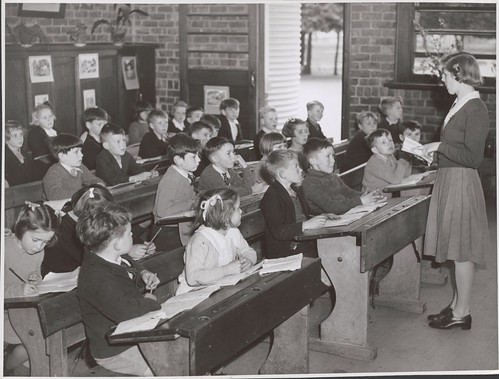Through various inputs we have explored how mathematics can have an effect on creativity. Without the Discovering Maths module, I would never have come to these conclusions myself. However, throughout history, fundamental mathematics such as shape and symmetry have been used to create artistic masterpieces. According to Barrow (2014), mathematics and art have a distinct link. This can be shown in various ways.
Tessellation
One way in which fundamental mathematics can be used in a creative way is through the use of tessellation. Tessellation can be described as the arrangement of identical shapes that cover a surface with no breaks or overlaps. Tessellation can be seen all around us from the tiles on the floor to the food we eat (mathsisfun, 2018). Tessellation is also apparent throughout the work of many artists. The work of M.C. Escher places huge emphasis on tessellation. He focused on this idea that you could fill a surface with pictures that did not overlap. He developed the complexity of his work by moving away from regular tessellation which involve one regular shape to using various pictures and making them tessellate (Tessellations.org, undated).
The first picture below helps us to see regular tessellation.

This picture allows us to look at the complex work of M.C. Escher.

The Golden Ratio
During a recent input, we focused on how symmetry and the use of mathematics can help us to create portraits. At first, we were asked to draw a portrait freehand. I found this extremely difficult as I have always struggled with art. My first drawing included a huge head, two misshapen eyes that were too close together and a forehead that was completely out of proportion. We were then asked to look around the room at these portraits and our own faces to find some common measurements and proportions. My high school knowledge of art, reminded me that our eyes are half way down our head. Adapting on these thoughts, we were able to redo our portraits using eight steps. These steps consisted of simple measurements, for example, the width of our face is around five eyes width. It is stated by Meisner (2012) that a ‘perfect’ face is based upon the ‘golden ratio’. Therefore, this suggests that beauty can be created and based on a mathematical scale.
Through the use of symmetry and scale, I was able to create a much more realistic portrait. This input was greatly important to my development, as it allowed me to not only lose my anxieties around math but also art.
The Rule of the Thirds
Another way in which mathematics can be used to enhance art is through the use of the rule of the thirds. This will enhance photography, as it allows the photographer to positon the main subject in the best possible way. To follow the rule, you must split a photograph into nine equal parts with two vertical and two horizontal lines. By placing the focus of the photo in a third section, it provides space around the focus. This means that when looking at the photo it is more attractive.
In conclusion, these inputs have allowed me to explore fundamental mathematics in a different way. I have come to realise that there is much more to maths than equations in a textbook. I feel this has also developed the way I think as a teacher as now, in the classroom, I see how we can elaborate on these fundamentals to create fun and exciting mathematics for the children to experience and enjoy.
References
Barrow, J.D. (2014). 100 Essential Things You Didn’t Know You Didn’t Know About Maths and the Arts. London: The Bodley Head.
Meisner, G. (2012) The Human Face and the Golden Ratio. Available at: https://www.goldennumber.net/face (Accessed: 10 November 2018).
Maths is Fun (2018) Tessellation. Available at: https://www.mathsisfun.com/geometry/tessellation.html (Accessed: 10 November 2018).
Tessellation. Org (undated) Tesselations – M.C. Escher 1. Available at: http://www.tessellations.org/tess-escher1.shtml (Accessed: 10 November 2018).




